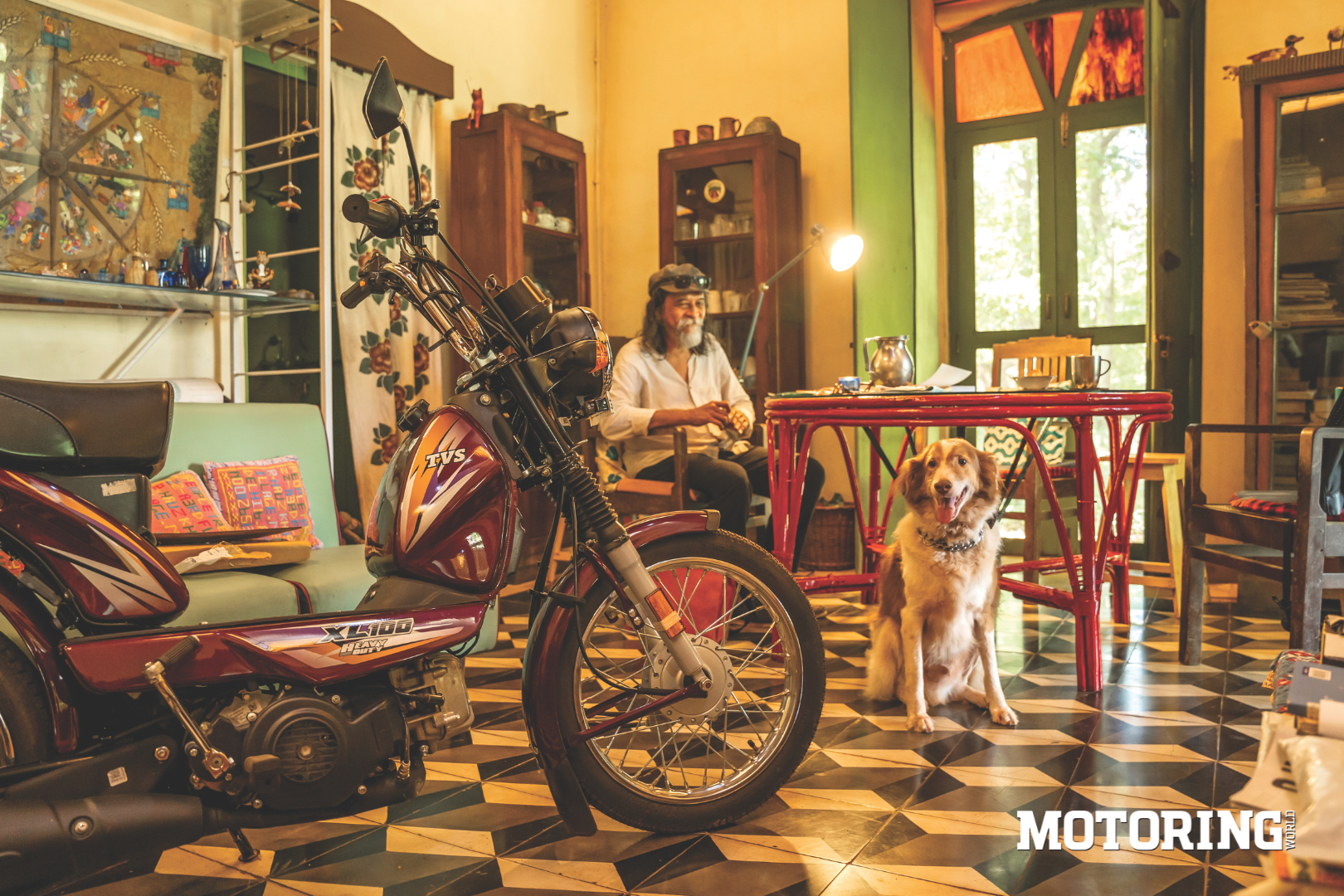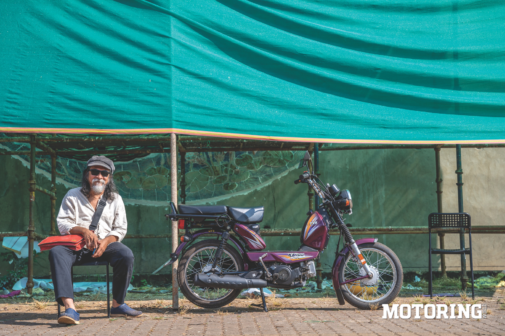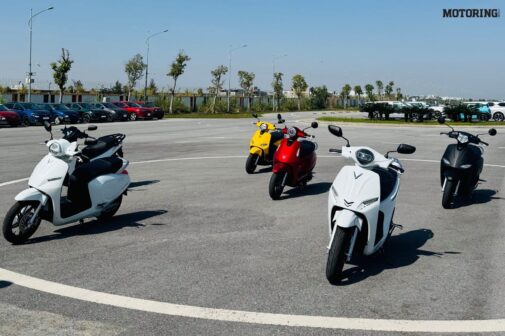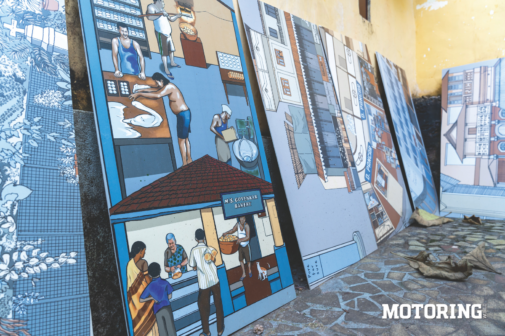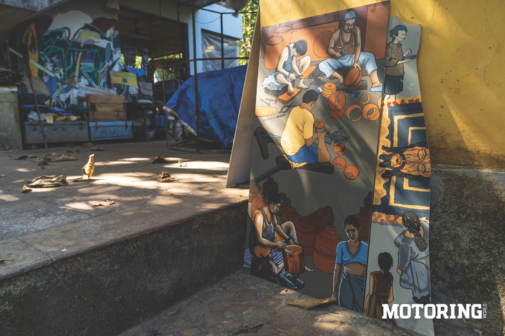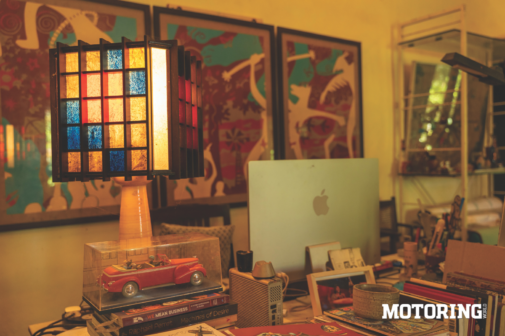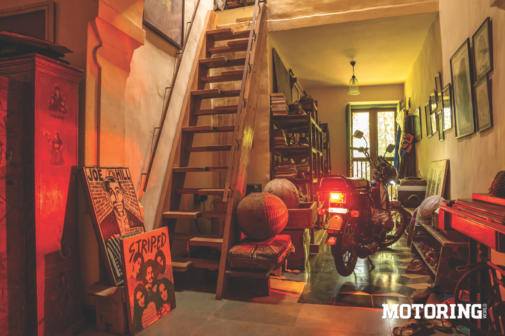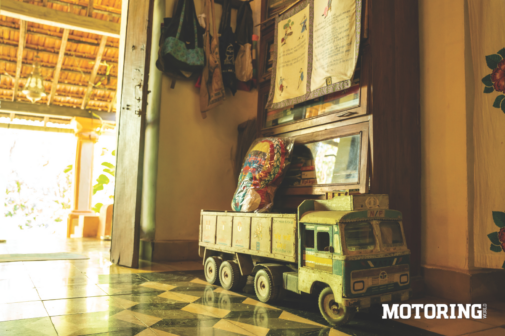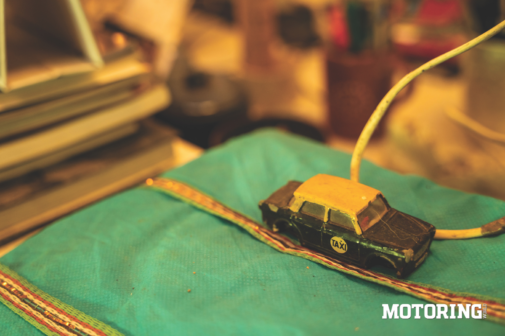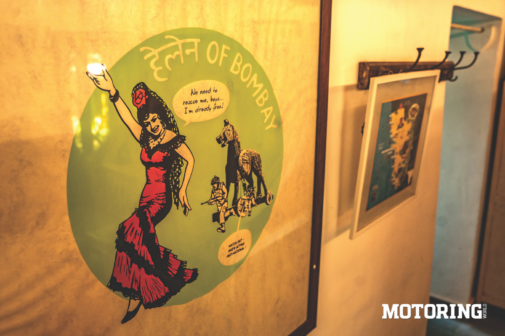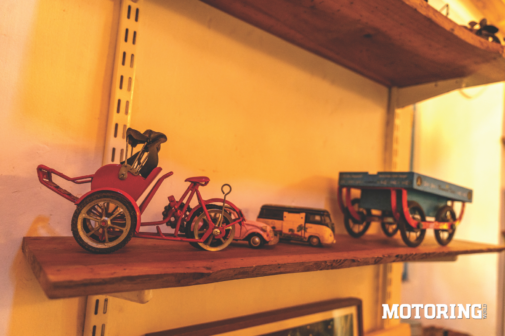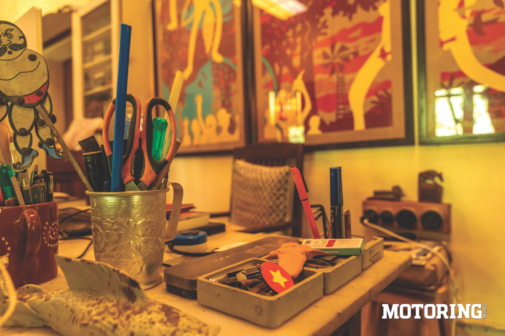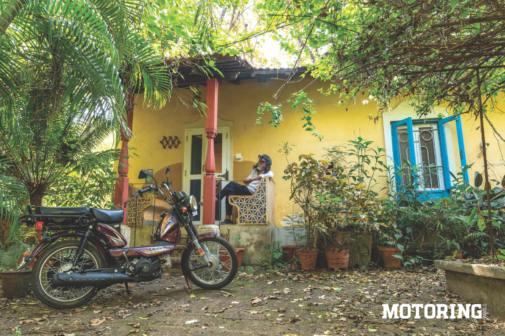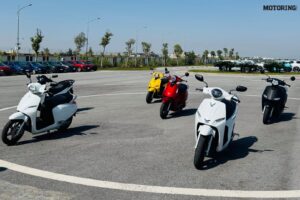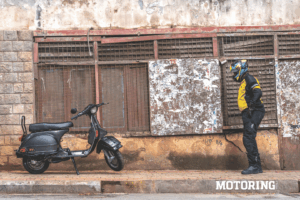Orijit Sen’s love affair with Goa is not just a romance of the place — it’s a fusion of art, history, culture, and the simplicity of everyday life. For the past 25 years, Sen has made Goa his home, drawing inspiration from the state’s vibrant energy and rich tapestry of experiences. Known for his pioneering work in the Indian graphic-novel scene with River of Stories in 1994, Sen’s artistic journey has been rooted in both the global and the local, and his latest creative endeavour — a 100-meterlong ceramic mural in Mapusa — reflects his deep connection to the land he has come to love.
Yet, amid his varied artistic pursuits, one of Sen’s most personal and unlikely loves is his TVS XL 100. A humble, iconic two-wheeler that has come to represent the simplicity and authenticity of life in Goa, the XL 100 is a striking contrast to the sophisticated works that fill Sen’s portfolio. But as the man himself would say, there is something deeply satisfying about this unpretentious machine — a vehicle that echoes the uncomplicated beauty of everyday life, much like his adopted home.
The Fun in Functional
It might seem curious that someone as immersed in the world of graphic design, murals, and conceptual art as him would choose a vehicle as modest as the XL 100. A machine that, at first glance, seems utilitarian — bare-bones even — amidst the modern and often flashy world of motorised two-wheelers. But for Orijit Sen, it’s precisely the XL 100’s simplicity that makes it a perfect design.
‘I’ve always wanted one,’ Sen admits with a smile. ‘It’s just one of those things that spoke to me. There’s no unnecessary gimmicks or showmanship in this bike. It’s a no-nonsense, honest design. It’s practical, light and fuel-efficient — what more could you want?’
For Sen, the XL 100 represents a piece of functional art, and ever since he bought it, he can’t get enough of it. The bike’s design, though minimal, is built for purpose, and in that, there is a unique beauty. Riding the XL 100 through the narrow, winding lanes of Goa, past old Portuguese houses with their faded charm, or through the lush green fields dotted with palm trees, Sen feels a connection to the real Goa — untouched by the over commercialised tourist traps slowly encroaching on its borders.
‘The XL 100 keeps you grounded,’ he reflects. ‘It’s like riding a bicycle — there’s nothing between you and the environment. You feel the wind in your face, the sun on your skin. It connects you with the world around you in a way no other vehicle does.’
Indeed, while Goa has seen a surge in luxury cars and flashy motorbikes, the XL 100 feels like a throwback to a simpler time, a time when the joy of riding wasn’t about making a statement but about the pleasure of the ride itself. There’s no need for fancy electronics or oversized tires. Instead, the XL 100 offers pure, unadulterated fun — an extension of Sen’s love for life’s simple pleasures.
The Goan Way of Life
For Orijit Sen, his XL 100 is more than just a mode of transport — it’s a reminder of the very essence of Goa, a place where life moves at its own pace, unhurried and unencumbered by the pressures of modernity. His home in Goa, an old house brimming with character and history, is a reflection of that same ethos. Filled with his artwork and handmade models of vintage cars, trucks, and carts, Sen’s abode is a sanctuary of nostalgia and creativity. Also found roaming around are his furry four-legged companions who have wandered in and decided to call the place home.
This connection between art and simplicity is central to Sen’s worldview. His artistic journey has always been about capturing the essence of the places and people he encounters, from his iconic River of Stories graphic novel to his current project — a towering mural titled Mapusa Mogi that adorns the parking lot of St. Jerome’s Church in Mapusa. Mogi, meaning ‘lover’ in Konkani, is an ode to the town of Mapusa and its rustic charm and untold stories. The mural itself is a massive labour of love, 100 metres long and 8 metres high, and represents Sen’s desire to integrate traditional craft techniques with contemporary art. In this piece, as in his choice of the XL 100, Sen finds beauty in the straightforward, the enduring, and the connected.
‘Mapusa may not care much for public art, but the town is brimming with inspiration,’ Sen says. ‘It’s a market town, where life is lived in the streets. There’s so much to capture, so much to translate into art.’
In a way, the XL 100 mirrors the spirit of Mapusa. Both are unpretentious and unassuming, but both are deeply rooted in the fabric of Goa. While Mapusa is a town that continues to thrive on its own terms, the XL 100 is a bike that has remained virtually unchanged over the years, surviving the onslaught of newer, more complex vehicles. It’s a symbol of timelessness, reliability, and practicality — qualities that Sen cherishes in both his art and his lifestyle.
A Blend of Old and New
Despite being a graphic designer and cartoonist who has spent decades pushing creative boundaries, Sen finds immense value in things that stand the test of time. This is what draws him to the XL 100 — a design that has remained largely unchanged since its inception in the 1980s. In a world where technology evolves at breakneck speed and where aesthetics often outweigh functionality, the XL 100 stands as a testament to a perfect design that does what it’s supposed to do without fuss.
Sen’s relationship with the XL 100 is not just about nostalgia; it’s about recognising the inherent value in something that endures. It is this appreciation for simplicity that defines both his approach to art and his perspective on life in Goa. In a world filled with noise and distractions, Sen believes in slowing down, taking a moment to appreciate the small things — the feel of the wind on his face, the sound of the engine humming beneath him, the sights and sounds of Goa as they rush by. ‘It’s not about speed or power. It’s about being present in the moment.’
In a world that often rushes toward the future, Orijit Sen and his XL 100 serve as a reminder to embrace the beauty of the present, to find joy in simplicity, and to cherish the things that truly matter. Whether he’s creating art or cruising through the Goan streets, Sen’s connection to both his craft and his bike is a perfect harmony of function, design, and love for the simple life. What can be more true to the Goan way than that?





